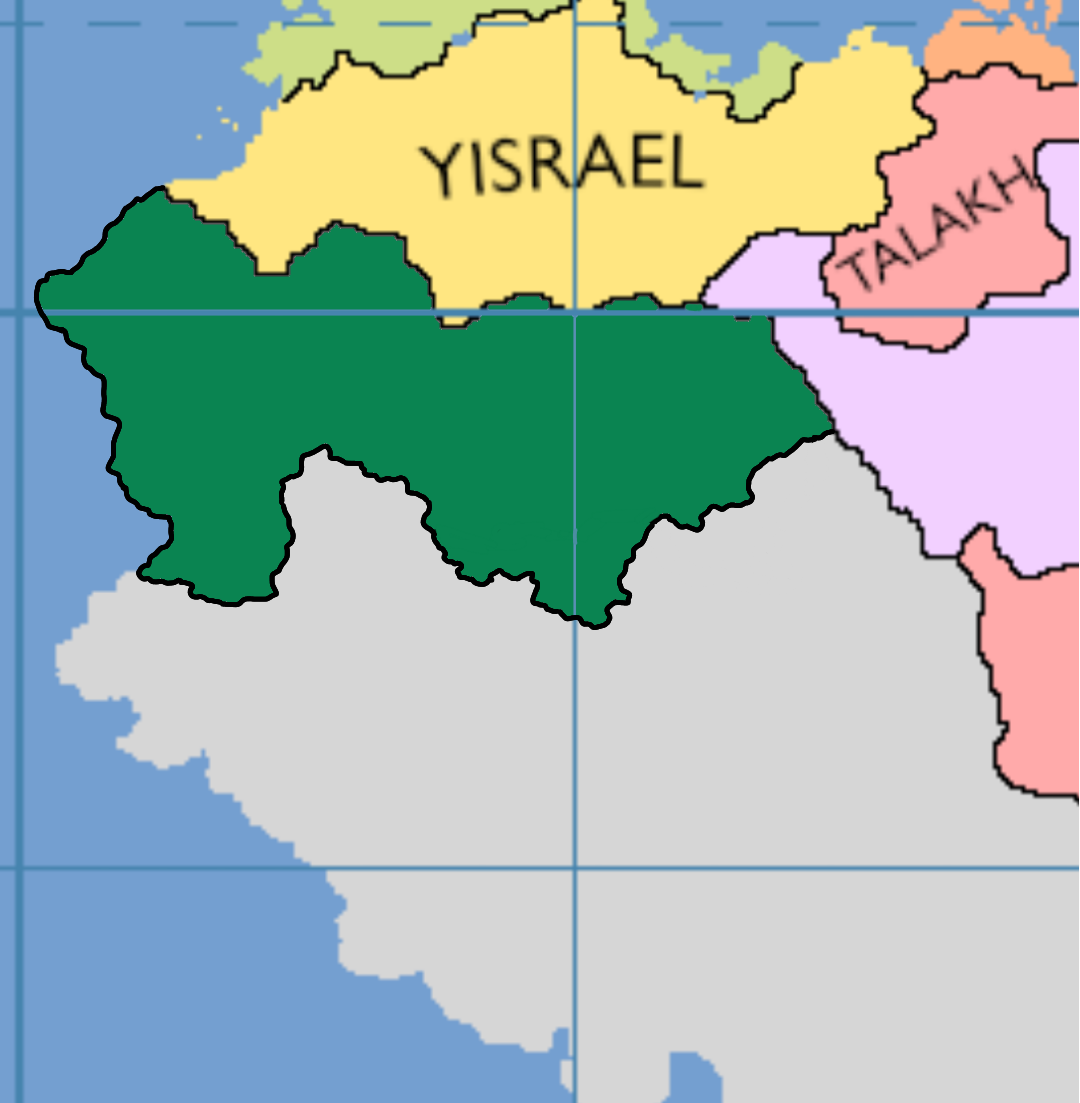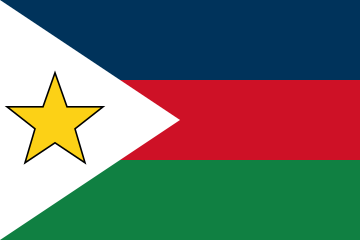
Advertisement

![]() by Cerovsya » Wed Jun 10, 2020 8:49 pm
by Cerovsya » Wed Jun 10, 2020 8:49 pm

![]() by Hammaria » Thu Jul 30, 2020 10:22 pm
by Hammaria » Thu Jul 30, 2020 10:22 pm
The first reform saw the creation of the Khanate's first legal code, which reconciled tribal and Islamic law to create a legal framework that was aimed at resolving tribal disputes and legal conflicts between the ulema and other landed estates.
The second reform divided the Khanate into fourteen regions. The steppe regions were divided into seven Ilkhanates (Ilkhanate means Subordinate to the Khan) while its settled regions were divided into seven Governorates (Muhafazat). Every Ilkhanate was ruled by one of the main tribes of the Hisari Khanate while the Governorates were ruled by administrators from Samarkand.
The third reform created a formal tax code that applied to the Khanate's settled and nomadic subjects. Under this system, Ilkhanates were required to send a certain amount of conscripts while Governorates were required to send a monthly payment in currency.
- The dissolution of the Hisari Khanate and the declaration of the Sultanate of Hisaristan.
- 1867 - the adoption of a national flag and anthem along with the foundation of a citizenship program.
- 1867 - the introduction of a modern, centralized system of regional administration.
- 1867 - the introduction of a fully conscripted army complete with a standard recruiting system with the necessary military and administrative framework for mass conscription.
- 1867 - the reorganization of the finance system.
- 1867 - the foundation of the Hisari Central Bank, the Samarkand Stock Exchange, and the Ministry of Economic Development, which funded and organized industrial and agricultural development schemes.
- 1867 - the foundation of the Ministry of Transportation, which funded the foundation railway networks.
- 1868 - the foundation of the Central Postal Service, which oversaw the foundation of post offices and telegraph lines.
- 1868 - the foundation of the Ministry of Statistics, which carried out the first census in 1870.
- 1869 - the reorganization of the education system and the foundation of the Ministry of Education, which oversaw the foundation of schools, libraries, and universities.
- 1869 - the foundation of the Ministry of Healthcare, which oversaw the foundation of modernized clinics and hospitals.
- 1869 - the foundation of the Hisari Academy of Science and Technology and the Samarkand Academy of the Arts.
- 1870 - the adoptions of a secular legal code and the removal of the office of Sheikh ul-Islam.

![]() by Besmenien » Fri Aug 07, 2020 1:18 pm
by Besmenien » Fri Aug 07, 2020 1:18 pm


![]() by Nordwalsh » Mon Oct 05, 2020 9:40 pm
by Nordwalsh » Mon Oct 05, 2020 9:40 pm

![]() by All-Ruthenia » Mon Oct 19, 2020 11:00 am
by All-Ruthenia » Mon Oct 19, 2020 11:00 am

![]() by Hildemyttschen im Stromheim » Sat Oct 24, 2020 10:52 am
by Hildemyttschen im Stromheim » Sat Oct 24, 2020 10:52 am


![]() by AESYRiEL » Sun Oct 25, 2020 1:43 am
by AESYRiEL » Sun Oct 25, 2020 1:43 am

![]() by Leasath » Fri Nov 20, 2020 9:10 pm
by Leasath » Fri Nov 20, 2020 9:10 pm

![]() by New Kvenland » Wed Dec 09, 2020 3:11 am
by New Kvenland » Wed Dec 09, 2020 3:11 am

![]() by Kayahallpa » Sun Dec 13, 2020 3:15 am
by Kayahallpa » Sun Dec 13, 2020 3:15 am

![]() by Pulau Keramat » Sun Dec 27, 2020 1:06 am
by Pulau Keramat » Sun Dec 27, 2020 1:06 am

![]() by Nacrad » Sun Dec 27, 2020 7:03 am
by Nacrad » Sun Dec 27, 2020 7:03 am
International News: HUNGARY IS OUT: Hungary quits the Warsaw Pact | Greece legalises same-sex marriage
Domestic News: 16 FEB 2024 (FRI) | Year of the Dragon: 10% birth rate boost expected, says Dept. of Health | CSG Resolute departs for ally visit | Highways & Transport Dept. revives M17 Motorway project between Namchon, KX and Samming, LK
Weather: Riverfort 23/27°C | Amoy 19/21°C | Taipei 23/25°C | Namchon 13/26°C

![]() by The Yremia Corporate » Wed Dec 30, 2020 5:18 am
by The Yremia Corporate » Wed Dec 30, 2020 5:18 am

![]() by Velselexo » Wed Jan 06, 2021 8:24 am
by Velselexo » Wed Jan 06, 2021 8:24 am

![]() by Carelia » Wed Jan 06, 2021 8:13 pm
by Carelia » Wed Jan 06, 2021 8:13 pm

![]() by Orcot » Sat Jan 09, 2021 2:44 pm
by Orcot » Sat Jan 09, 2021 2:44 pm

Durradon wrote:
Somewhere in Arasland
Sergeant Samson Carwin
Days went by as the group made their way through the snow, sheltering in forests and hunting occasionally to keep their food supplies up rather than waiting for them to run out. The northern land was a kingdom of ice and blizzard this time of year. Samson's men shivered with every step, the only reason they had not frozen to death being their heat suits that covered their whole body, keeping the wearer's skin from frostbite but doing little to defend against mistress winter's cold kiss. They complained to each other as if they were talking about a person they both hated, cursing and wishing they could go home. Samson, on the other hand, enjoyed the cold. Samson was the only one on the team who lived in the artic territories of the CSD. They were similar to the Green Union except for the lack of mountains and hills, nevertheless, Samson felt at home if a little bit lost. Eule seemed to know the way, Samson knew not where he was being taken and when he asked Eule would merely mutter: "A safe place". Samson did not want to leave the girl, she had lost her friends and family and was with strange men in the middle of nowhere, although she was probably the safest she'd ever been for the past few days. She rolled her eyes at the mistakes Samson's men made about surviving in this hell hole, even taking a small amount of pleasure when one of the Durranese fell in the snow or set up a trap wrong. Samson and Eule would usually tend to the business of hunting while the others set up the camps and cooking. If there was anything that the soldiers knew, they knew how to fight and cook. Each meal was hearty in addition to flavourful and went from Durranese style rations to whatever meat Samson and Eule managed to bring back. It was no gourmet experience, but it was warm and tasted of something other than spit and frost, so that was better than good.
As the journey continued, days turned into weeks. Food was stretched thin however Eule told her travelling companions there would still be enough for the remaining journey if it was rationed. Samson put a great deal of trust in the teenager that his men did not understand. Samson thought about his own daughter who he promised to go hunting with when he went back home. Setting traps with the Aras and stalking local wildlife made him think home and the broken promises he had never kept. Some nights, Samson would weep in solitary silence. The sergeant's heart was strong though, he pushed forward not letting the past contain and weaken him. But paternal issues were the least of Samson's worries. His men took him aside and asked what they were doing. Samson replied similarly to Eule, adding that once she was safe they would find the SFD operator that was there to get them out of the Green Union. While the Durranese soldiers did not like their situation they remained loyal and true, saying that they would follow their leader to whatever end but hoped that he was making the right choice. Although spirits were high, much of the SFD operator's equipment was now failing on on them. Their tactical wrist pads were busted, their HUD glasses malfunctioning and their gun's needed semi-regular touch-ups to remain operational. If they did not reach Eule's safe place soon, they would be in deep snow as well as trouble. Thankfully the heat suits were holding on but running out of power. This was Eule's home, she was in her element, although slightly cold like the rest of the men, she knew how to survive and stay warm enough from the storm of snow.
A month had passed. Eule and Samson had little luck hunting but Samson enjoyed the quiet moments they had in the wilds. Samson shared a bottle of sake with his group, he had to melt it before leaving camp and drink at a slightly faster rate than he would have normally so it did not freeze again. The group enjoyed the last of their food as Eule said that a settlement was near and that they could get supplies and transport there. That was the longest hour of the fireteam's life. It seemed not to matter how quickly they walked, nor did the "quicker paths" Eule took them on make the trek any less long. They were desperate to get somewhere warm, eat real food and get out of this hell that had frozen over.



![]() by Zacatlacan » Wed Jan 13, 2021 8:28 am
by Zacatlacan » Wed Jan 13, 2021 8:28 am

![]() by Burgjano » Sun Jan 17, 2021 11:57 am
by Burgjano » Sun Jan 17, 2021 11:57 am


![]() by Antonia and Brookwood » Mon Jan 25, 2021 12:51 pm
by Antonia and Brookwood » Mon Jan 25, 2021 12:51 pm


![]() by Seonko » Sat Feb 06, 2021 7:56 am
by Seonko » Sat Feb 06, 2021 7:56 am

![]() by Nordwalsh » Sat Apr 03, 2021 1:08 pm
by Nordwalsh » Sat Apr 03, 2021 1:08 pm

![]() by Mont-Saint-Cyr » Tue Apr 06, 2021 6:43 pm
by Mont-Saint-Cyr » Tue Apr 06, 2021 6:43 pm

![]() by Wahland » Sat May 08, 2021 12:11 am
by Wahland » Sat May 08, 2021 12:11 am

![]() by Awasin » Fri May 14, 2021 9:28 pm
by Awasin » Fri May 14, 2021 9:28 pm
Advertisement
Return to Factbooks and National Information
Users browsing this forum: Soviet Belcraine-Russian Unionstate
Advertisement